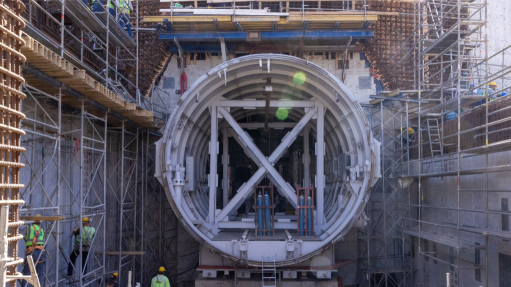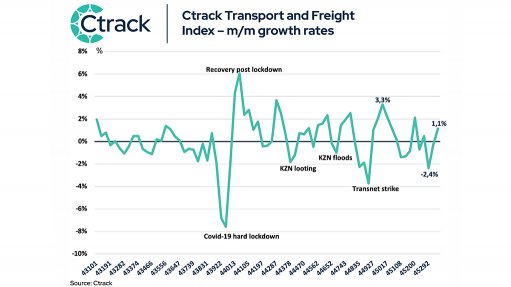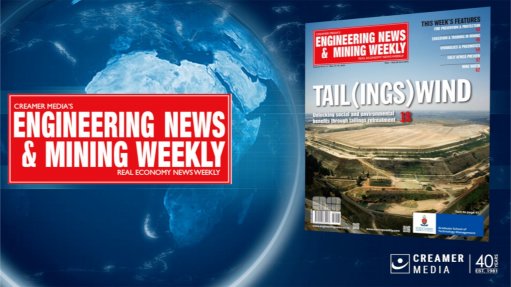Value chain systems thinking: ‘stuck in the eighties’
In this article, Max Smeiman and Garth Strachan further explore the technical requirements that impact digitalisation of the extended Technical Value Chain (TVC), building upon previous articles in the series, and explain essential technology concepts to enable 4IR.A good illustration that systems thinking and practice in South Africa may be ‘stuck in the eighties’ is that leading mining companies continue to procure from suppliers utilising a pdf order delivered by email. Research suggests that most ERP systems are not implemented to current best practice with critical value chain functionality often excluded, limiting its ability to deliver value. Hence, it may be unsurprising that Microsoft Excel remains the planning system of choice. When the quantum advances and benefits of digital capability are ignored, what should be a digitally enabled boardroom becomes an unsighted executive cocoon. Why then, we venture to ask, do companies persist with clumsy and cumbersome procurement processes, which fail to prevent corruption and are bypassed at will with ‘emergency orders’ that increase costs with no real benefit? Organisations that rely on outdated business processes ignore the clear advantages of modern systems that can secure and optimise sourcing decisions, authenticate local content and BBBEE transformation status, and verify the quality and safety of products across multiple vendors at buy-time. Such capabilities enable the transparent choice of the best offer, utilising a wide range of order qualifiers. The real-time capabilities that exist today in available digital systems could easily have secured value for money, curtailed or even prevented malfeasance in public PPE procurement. A Reset of Tvc Technology Item identification and value chain business process standards are critical for digitalisation. It is a fundamental requirement to enable business rules and optimised workflows that can be automated with machine learning. Without secure, reliable and accurate data, every transition towards a digitally enabled and fully integrated 4IR world will remain locked in the hype. The need to send billions of Facebook and WhatsApp messages daily led to the ’rediscovery’ of old technologies such as the Message Queuing Telemetry Transport standard (MQTT) developed by IBM in the late 1990s. MQTT became the backbone of the Internet of Things (IoT). Simultaneously Advanced Message Queuing Protocol (AMQP) has rapidly matured into an industrial-strength messaging protocol. System integration beyond the four walls of a factory is also becoming easier with developments in Service-Oriented Architecture (SOA), Application Programming Interfaces (APIs) and Web Services. Lightweight data- interchange protocols are also gaining acceptance to transport messages between systems with relative ease and securing these messages with blockchain technologies are making significant inroads into the TVC. We can now create connected value chains with near real-time visibility that significantly reduce supply risk, eliminating the need for insecure email transactions. Adopting a Common Digital Language However, secure transaction message delivery is only half of the problem; defining the content and structure for all possible value chain messages is critical. Also, for each electronic message, there must be a structured response and a defined corrective action when it gets lost in cyberspace. Electronic Data Interchange (EDI) developed in the 70s was the first to define structured messages. This was adopted by the Consumer-Packaged Goods and Retail (CPG&R) industry in the early 90s to provide end-to-end transaction visibility. Since then, EDI spawned many variants, with GS1’s EDI standard gaining prominence for cross-industry adoption. The adoption of these standards will be a minimum requirement to participate in a connected 4IR value chain. At present, EDI is utilised in domestic companies predominantly for order and price management with limited implementation to enhance supply collaboration and to enable optimisation of all operational functions, in particular logistics, manufacturing and equipment maintenance. It is also important to note Business to Manufacturing Mark-up Language (B2MML) that focuses on providing a common data definition for manufacturing execution and control systems, which is part of the ISA-95 standard and IEC/ISO 62264. Adoption of B2MML will be critical for future smart factories. Finally, the assurance of data quality will be especially demanding in 4IR data-hungry systems and compliance with these standards will be non-negotiable. The adoption of ISO-8000 to ensure data quality will be critical if companies want to extract value from expensive technology implementation. In the future, ISO-8000 will be to the 4IR what ISO-9001 is to product quality today. Conclusion The domestic adoption of EDI protocols within the TVC remains low as it is hampered by poor systems implementation and a perception that it is too costly. However, implementation of these technologies will not only enable a mining company in Sudbury to source pumps from a manufacturer in Edenvale but also track the assembly and delivery of orders in real time, within their ERP system. This will all be made possible by integration standards and messaging technologies that are currently available within most ERP’s. At its most basic level, the future will be: ‘I cannot buy from you if your systems cannot talk to mine’. The common view that transaction integration is ‘just too expensive’ requires robust engagement with ERP providers, or else the TVC will remain an inefficient outmoded compliance-driven process that adds no value and fails to deliver a competitive cost advantage. The impact technology should have on performance-based industrialisation is just too significant to ignore.
Comments
Press Office
Announcements
What's On
Subscribe to improve your user experience...
Option 1 (equivalent of R125 a month):
Receive a weekly copy of Creamer Media's Engineering News & Mining Weekly magazine
(print copy for those in South Africa and e-magazine for those outside of South Africa)
Receive daily email newsletters
Access to full search results
Access archive of magazine back copies
Access to Projects in Progress
Access to ONE Research Report of your choice in PDF format
Option 2 (equivalent of R375 a month):
All benefits from Option 1
PLUS
Access to Creamer Media's Research Channel Africa for ALL Research Reports, in PDF format, on various industrial and mining sectors
including Electricity; Water; Energy Transition; Hydrogen; Roads, Rail and Ports; Coal; Gold; Platinum; Battery Metals; etc.
Already a subscriber?
Forgotten your password?
Receive weekly copy of Creamer Media's Engineering News & Mining Weekly magazine (print copy for those in South Africa and e-magazine for those outside of South Africa)
➕
Recieve daily email newsletters
➕
Access to full search results
➕
Access archive of magazine back copies
➕
Access to Projects in Progress
➕
Access to ONE Research Report of your choice in PDF format
RESEARCH CHANNEL AFRICA
R4500 (equivalent of R375 a month)
SUBSCRIBEAll benefits from Option 1
➕
Access to Creamer Media's Research Channel Africa for ALL Research Reports on various industrial and mining sectors, in PDF format, including on:
Electricity
➕
Water
➕
Energy Transition
➕
Hydrogen
➕
Roads, Rail and Ports
➕
Coal
➕
Gold
➕
Platinum
➕
Battery Metals
➕
etc.
Receive all benefits from Option 1 or Option 2 delivered to numerous people at your company
➕
Multiple User names and Passwords for simultaneous log-ins
➕
Intranet integration access to all in your organisation


















